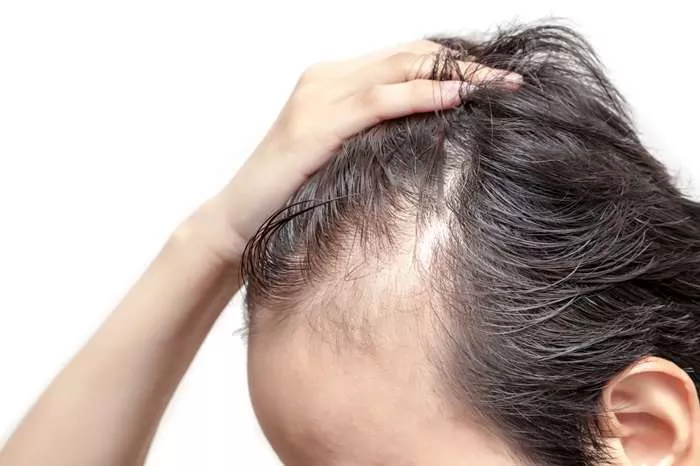Hairline recession is a common concern for many individuals, particularly as they age or experience hair loss. While hair transplant surgery offers a permanent solution, many people are interested in natural methods to stop hairline recession and promote hair regrowth. This article will provide a detailed guide on how to stop a receding hairline and regrow hair naturally, covering various approaches and practical tips.
Understanding Hairline Recession
Hairline recession is a common phenomenon where the hairline gradually moves backward, creating a higher forehead. This process is often associated with male pattern baldness (androgenetic alopecia) but can also affect women. Hairline recession can be influenced by genetic factors, hormonal changes, aging, and lifestyle choices.
When Does Hairline Recession Typically Begin?
Hairline recession can begin at any age, but it is most commonly observed in individuals in their 20s and 30s. According to the American Hair Loss Association, approximately 25% of men will begin experiencing hair loss by the age of 25, and about 50% will experience significant hair loss by the age of 50. In women, hairline recession can also occur, often due to hormonal changes during menopause or other life events.
Natural Methods to Stop Receding Hairline and Regrow Hair
Scalp Health and Care
Scalp Massage
Gentle scalp massage can help stimulate blood flow to the hair follicles, delivering essential nutrients and oxygen. This can promote hair growth and reduce hair loss. Use your fingertips to massage your scalp in circular motions for a few minutes each day.
Scalp Treatments
Using natural oils like rosemary, peppermint, or lavender oil can help improve scalp health and promote hair growth. Mix a few drops of essential oil with a carrier oil like coconut or jojoba oil and massage it into your scalp. Leave it on for a few hours or overnight before washing it off.
Herbal and Nutritional Support
Saw Palmetto
Saw palmetto is a well-known herb that may block DHT production. Blocking DHT is thought to slow or reverse hairline recession, thus giving follicles more time to thrive. Consider taking saw palmetto supplements or using topical products containing this herb.
Biotin
Biotin is a B-vitamin that supports hair health. It can be found in foods like eggs, nuts, and seeds, or taken as a supplement. Biotin helps strengthen hair follicles and promotes hair growth.
Iron and Zinc
Iron and zinc are essential minerals that support hair growth. Iron helps deliver oxygen to hair follicles, while zinc aids in the production of new hair cells. Include iron-rich foods like red meat, spinach, and beans in your diet, and consider taking zinc supplements if needed.
Lifestyle Adjustments and Stress Management
Stress Reduction
High stress levels can push more follicles into their resting phase, leading to increased shedding. Techniques like mindfulness, low-impact exercise, or short breathing sessions might be beneficial. Aim for 7–9 hours of sleep nightly to allow hormone regulation and cellular repair to occur, both of which could contribute to healthier hair cycles.
Avoid Tight Hairstyles
Tight hairstyles like ponytails or braids can put tension on the hair follicles, leading to hair loss. Opt for looser hairstyles to reduce strain on the scalp.
Limit Chemical Treatments
Chemical treatments like coloring, perming, or straightening can damage hair follicles and lead to hair loss. Limit these treatments and opt for natural hair care products whenever possible.
Natural Remedies and Supplements
Aloe Vera
Aloe vera has soothing and anti-inflammatory properties that can help improve scalp health. Apply pure aloe vera gel directly to the scalp and leave it on for a few hours before washing it off.
Onion Juice
Onion juice contains sulfur compounds that can stimulate hair growth. Extract the juice from an onion and apply it to the scalp. Leave it on for 15-20 minutes before rinsing it off.
Green Tea
Green tea is rich in antioxidants and can help reduce inflammation. Drink green tea regularly or apply cooled green tea to the scalp as a rinse.
Practical Tips for Daily Hair Care
Gentle Shampooing
Use a gentle, sulfate-free shampoo to clean your scalp without causing irritation. Avoid harsh chemicals that can strip the scalp of its natural oils.
Regular Trimming
Regular trims can help prevent split ends and keep your hair looking healthy. Aim to get a trim every 6-8 weeks.
Protect from Sun and Heat
Protect your hair from the sun and heat by wearing a hat or using a UV-protective spray. Avoid using heat styling tools like hair dryers, straighteners, or curling irons whenever possible.
Conclusion
Stopping a receding hairline and regrowing hair naturally involves a combination of scalp care, herbal and nutritional support, lifestyle adjustments, and stress management. By incorporating these methods, you can potentially slow hair loss and promote regrowth. It’s important to remember that results may vary, and patience is key. If you are concerned about hair loss or have any questions, consult with a qualified hair specialist for personalized advice and guidance.
Related topics:
- A Guide to stop receding hairline and regrow hair naturally
- How to Regrow Your Hairline Naturally: Effective Strategies
- Can We Stop Hereditary Hair Loss? A Detailed Guide


